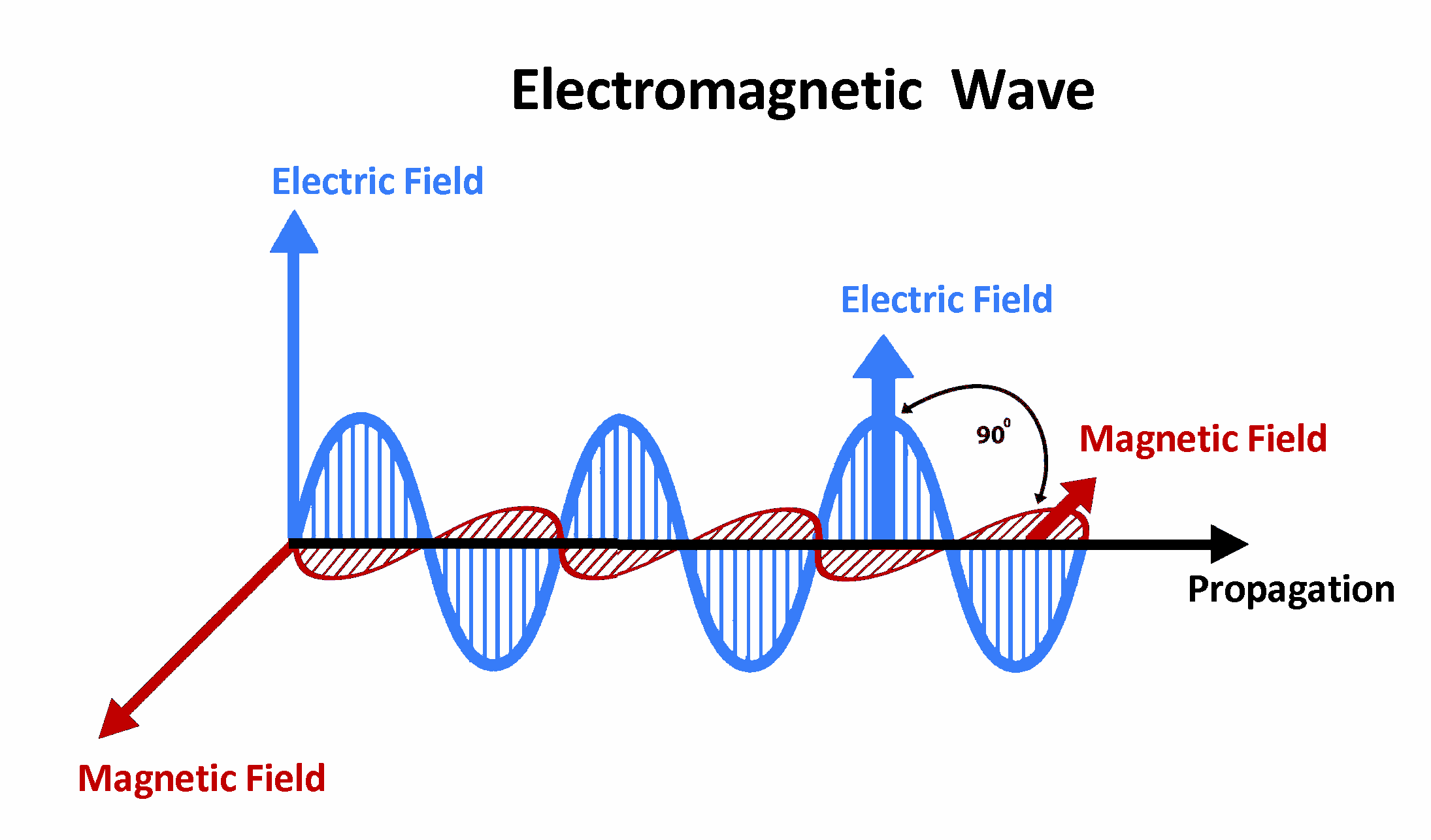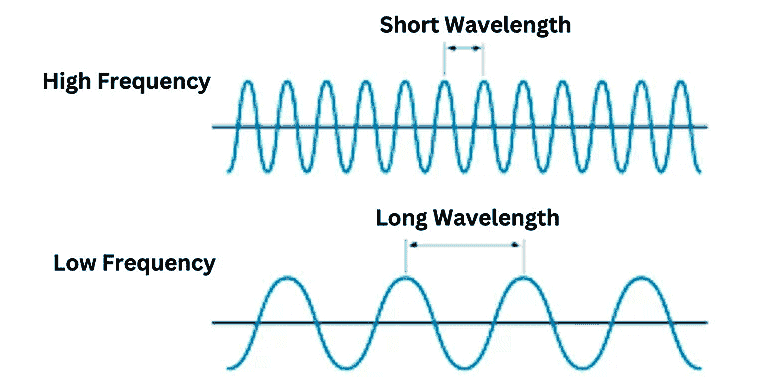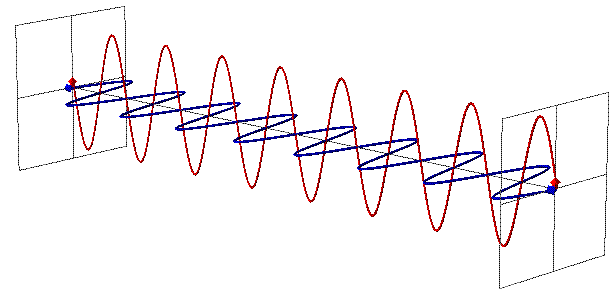
 What Are Electromagnetic Waves?
What Are Electromagnetic Waves?
- What is an elctromagnetic wave? ↗
- Essence and basic nature of elctromagnetic waves↗
- Wavelength, frequencies↗


Figure 2: Electromagnetic wave fields and propagation Figure 3: A wave characterized by frequency and wavelength
Frequency (f): Cycles per second (Hertz). Wavelength (λ): Distance between successive wave crests. Formula:c = f*λ, where c is light speed.
Electromagnetic waves have two important properties: wavelength and frequency. The distance between two consecutive wave crests is represented by wavelength, whereas frequency is the number of wave cycles that pass a given point in one second.
- Spectrum↗ The wavelengths range from less than a millimeter to over 100,000 kilometers (10-3 - 108 meter); frequencies 3 Hz - 300 GHz.
- History of Human Knowledge
- Natural Sources
A "wave" is a term used to describe a periodic disturbance in time that has repeating peaks and valleys and can move from one location to another.
For example, a wave in water is a disturbance in the water level, a sound wave is a disturbance in the air density, and a radio wave is a disturbance in the electric and magnetic fields. Water waves or sound can only propagate in matter, while electromagnetic waves do not require a medium to propagate.
Oscillating electric and magnetic fields produce electromagnetic (EM) radiation. All EM waves travel in vacuum at the speed of light.

Figure 1: A dynamic illustration of electromagnetic wave

The discovery and understanding of electromagnetic waves have a rich history. In the late 19th century, James Clerk Maxwell's equations provided the theoretical foundation these waves. It was Heinrich Hertz who first demonstrated the existence of elctromagnetic waves in the laboratory in the 1880s. Hertz's experiments showed that electric sparks could produce and detect elctromagnetic waves, marking a significant breakthrough.
However, it was Guglielmo Marconi who made practical use of elctromagnetic waves for wireless communication in the early 20th century. His work led to the development of the first radio transmitters and receivers, paving the way for modern wireless communication systems.
Since the Big Bang elctromagnetic waves have been produced by various natural sources. One of the most prominent natural sources of electromagnetic waves is celestial objects, including stars, planets, and galaxies. Many kinds of telescopes are specialized instruments designed to observe these cosmic emissions, allowing scientists to study the universe's hidden secrets. Earth's atmosphere also emits electromagnetic waves through processes like lightning strikes, which generate lights and radio signals known as sferics (sometimes also spelled "spheric"). These natural electromagnetic emissions can be harnessed for meteorological and atmospheric studies.
- References:
- Electromagnetic radiation Wikipedia
- Electromagnetic spectrum Wikipedia
shows near-real-time indices and explains what the terms mean.